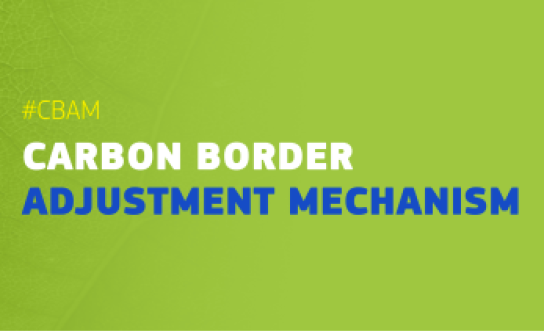19 December 2023
What is Carbon Leakage?
The EU has a carbon pricing system, called the EU Emissions Trading Scheme (ETS). This scheme places a price on emissions of carbon in certain sectors; businesses in these sectors have been receiving free allowances, meaning they are allowed to emit certain amounts of carbon before they must start paying for it. These free allowances are now being phased out.
The CBAM will place a price on the carbon emissions of goods imported into the EU to bring the carbon price on those goods in line with goods manufactured within the EU. The intention is that this will stop businesses that are losing their free allowances from shifting production to countries without a carbon pricing system where less-stringent climate policies are in place.
UK businesses exporting to the EU need to be aware of what data their EU customers will require and how their business may need to evolve to remain competitive.
The CBAM will initially apply to imports into the EU of certain goods whose production is carbon intensive. This includes:
- cement
- iron and steel
- aluminium
- fertilisers
- electricity
- hydrogen
And some downstream products of the above.
CBAM entered into force on 1 October 2023, in a transitional phase. During this phase, importers of goods within the scope of the CBAM will have to report greenhouse gas emissions embedded in their imports. However, no financial payments (adjustments) will be necessary.
During the first year of implementation, companies will be able to report emissions in one of three ways:
- full reporting according to the EU method(set out within the implementing regulations for the EU CBAM);
- reporting based on equivalent third-country national systems; or
- reporting based on reference values.
From 1 January 2025, the EU method will become the only acceptable method of embedded emissions reporting.
From 1 January 2026, importers will need to declare the quantity of goods imported into the EU in the preceding year and their embedded emissions. The importer will then surrender a corresponding number of CBAM certificates, which will be priced depending on the weekly average auction price of EU ETS allowances.
As EU ETS free allowances are phased out between 2026 and 2034, the price of CBAM certificates should increase, thus increasing the incentive for EU businesses to decarbonise their supply chain.
So what does this mean for UK marine businesses?
UK businesses may not themselves be required to report under the EU CBAM (unless they are acting as importer in their own name in the EU). However, UK exporters to the EU will be expected to provide emissions data to allow their EU customers to meet their obligations.
Exporters to the EU should start considering whether they are able to provide the necessary data. This might include:
- commodity codes of goods
- country of origin
- direct emissions from
- fuel combustion
- waste gas
- process emissions
- indirect emissions from electrical energy consumed
Although companies will be able to report based on reference values until 1 January 2025, EU businesses may be looking for early reassurance that non-EU suppliers will be able to provide the relevant data in the correct format.
As well as data requirements, the EU CBAM will impose an actual cost on carbon-intensive imports from 1 January 2026. UK businesses should be thinking about how to decarbonise to ensure they remain competitive.
What’s next?
Although the CBAM will apply to six sectors initially, the intention is that all sectors covered by the EU ETS will be within scope of the CBAM by 2030. For example, the expansion could bring the production of glass or chemicals within scope of the CBAM.
Other countries are also looking to implement CBAMs. The UK government has consulted on introducing a UK CBAM, most likely following a similar timetable to the EU CBAM. More details on the outcome of this consultation are expected soon.
Find out more about CBAM here: Carbon Border Adjustment Mechanism (europa.eu)

